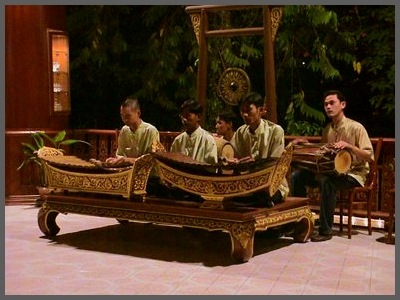THAI CULTURE OF MUSIC

In the past, there were two kinds of traditional music in Thailand: folk music enjoyed by people in the countryside and the "classical" music heard at the royal court.In the royal Thai court, music was important in ceremonies and as entertainment. In 1932, with the end of the absolute monarchy, Thai classical music was no longer limited to use in the royal court and became available to anyone.
Classical Thai music is now primarily heard at tourist attractions, as Thai classical music remains an emblem of identity in representing Thailand to outsiders. Thai folk music also remains important in some rural areas, but the current musical diet of most Thai people consists of popular songs with Thai lyrics.
Percussion instruments include: finger cymbals and larger hand cymbals; castanet-type clappers; xylophones and metallophones; small, pitched gongs attached to the inside of a U-shaped frame; larger gongs; and single- and double-headed drums.
Woodwind instruments include flutes, a type of recorder, a double-reed instrument similar to an oboe, and a mouth organ. Different versions of mouth organ are used in other Asian countries, such as China and Japan.
Thai string instruments include a three-stringed zither, a three-stringed spike fiddle that is held vertically, and a hammered dulcimer, which is a very popular Thai traditional instrument.The main Thai ensemble is the piphat. The standard piphat includes melodic percussion, cymbals, the larger gong, drums, and the oboe-like wind instrument. This instrumental ensemble accompanies plays based on traditional Thai stories, masked plays derived from the Indian epic Ramayana, and a variety of ceremonies, including one that honors teachers.
Vocal music is usually performed with only drum and finger cymbals for accompaniment. The singer uses ornamentation and goes outside the 7-tone scale. Sung pieces are usually interspersed with instrumental pieces in performance.
Rhythm is usually organized in duple meter, with the finger cymbals marking off the beats and measures. Drum strokes add to this rhythmic texture.
Thai music is characterized by the layering of rhythms and pitches rather than the harmony, chord progressions, and melodies that are so important to Western music.
